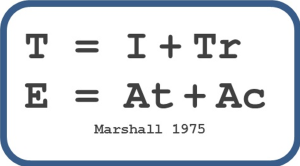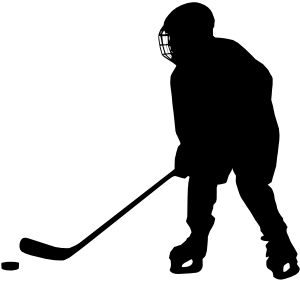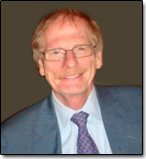 I’m a word-weenie, not a number-cruncher. Venturing into territory that even pretends to involve mathematics is risky for me. Even so, my experience with applying the Performance Equation both personally and in selecting and developing high performers has led me to an insight that I believe makes sense metaphorically, if not mathematically, when expressed as a formula.
I’m a word-weenie, not a number-cruncher. Venturing into territory that even pretends to involve mathematics is risky for me. Even so, my experience with applying the Performance Equation both personally and in selecting and developing high performers has led me to an insight that I believe makes sense metaphorically, if not mathematically, when expressed as a formula.
Before leaping to my conclusion about exponential performance, we must first dig more deeply into the reasoning and research that form the underpinning for the original Performance Equation: T x E x O = P.
We’ll focus first on the T—Talent—and its two components, Inherent Traits (I) and Trainable Skills (Tr).
[Warning: You’re in for a bit of a rambling, lengthy journey. I believe your patience will be rewarded…but I also acknowledge that only you can be the ultimate judge of that. ]
<<<>>>
Picture a hockey rink in Toronto, Canada. It’s late in the afternoon, and late in the decade of the 1950s. A lone figure occupies the ice, relentlessly practicing his stick-handling and puck management fundamentals. The other guys on the team have long since gone home. Our hard-working hockey player—let’s call him John—looks pretty good out there, but doesn’t necessarily appear to be the next Wayne Gretzky. In fact, if you ask John today to assess his own ability at that time, he’ll quickly tell you, “I was a reasonable athlete at most things, but not great at any.”
Still, all that hard work paid off. John made it to the NHL. He played with the Philadelphia Flyers organization in 1967-8, and then coached hockey at York University and in Italy.
Now, whatever stereotypes you may hold about athletes, you need to know that John was no “dumb jock,” but rather an astute observer of human behavior. Here—I’ll let him tell you himself what he learned when he first entered the NHL, in this excerpt from a radio interview transcription:
“I could see in pro-[hockey] camp that some very skilled players never made it to the top, and others that were not quite as skilled (but still relatively skilled) were very, very successful. And of course, the ones at the top were very skilled and they worked very hard.
“The two characteristics that came out were talent, some of it inherent talent, and then there was effort, and how hard they worked. And those two things started to dictate who made it at a high level in the athletic world. Of course it’s the same in the business world.”
 Talent and effort. John recognized from his own life experience that his intense effort allowed him to perform better than his inherent talent would suggest that he could—to punch above his weight, to mix sports metaphors. The interaction between these two aspects of performance deeply fascinated John, and ultimately led him to leave hockey and pursue a Ph.D. at York University.
Talent and effort. John recognized from his own life experience that his intense effort allowed him to perform better than his inherent talent would suggest that he could—to punch above his weight, to mix sports metaphors. The interaction between these two aspects of performance deeply fascinated John, and ultimately led him to leave hockey and pursue a Ph.D. at York University.
John’s doctoral thesis was an exploration of the effects and influences of competitive environments. His original theory was that high-demand work environments (such as professional hockey or competitive sales) require powerful personality characteristics for someone to survive and perform effectively. The further hypothesis was that these characteristics could be assessed reliably and that all individuals possess these characteristics to varying degrees (Marshall, 2003).
After analyzing the best psychological thinking of the times, John targeted a short list of personality characteristics that he believed would be performance differentiators, and envisioned them as bi-polar continua stretching from one extreme to another. The original study involved 87 competitive salesmen in the real estate, life insurance, and automotive sectors, and used their net income as the “score” that separated high performers from low performers.
Lo and behold, the research validated John’s hypotheses, and our friend the hard-working hockey player became John C. Marshall, Ph.D., founder of Self Management Group, the first and largest online assess ment company in the world.
ment company in the world.
Today, after more than 35 years of statistical science research on almost 20 million individuals in more than 2,500 companies around the world and across industries, the assessment tools developed by Dr. Marshall and his team of statistical researchers measure the six personality traits—the Inherent component of Talent—that have been statistically demonstrated to predict high performance and retention in business roles. As in the original study, the trait measurements locate an individual across a range of possibilities:
- Enterprising Potential—how you express initiative, from proactive to responsive
- Achievement Potential—what motivates you: $$/challenge? People & service? Duty?
- Independence Potential—from strongly independent to strongly prefers teamwork
- Comfort with Conflict—from very comfortable with conflict to actively avoids it
- People Orientation—from builds relationships quickly to builds relationships slowly
- Analytical Orientation—from learns for the sake of learning to learns only the minimum
Psychologists have long understood that these inherent traits, the core elements of our personalities, are established early in life, and don’t readily change. Indeed, Enterprising Potential, Achievement Potential, and Independence Potential are generally well-established in an individual by the time they reach age 16. The remaining three traits—Comfort with Conflict, People Orientation, and Analytical Orientation—congeal a little later, after one has had more experience working with people and information. Still, by your late 20s/early 30s, these traits are also pretty well baked into your personality.
Looping back now (whew—finally!) to the Performance Equation, you can see that in terms of what you can do (aka your Talent), your inherent personality traits make a crucial contribution. But they provide only part of the picture.
As Paul Harvey used to say, in the next post, we’ll look at “the rest of the story” regarding Talent.
~~~
Full Disclosure: I am a Senior Consultant with Smart Work | Network, Inc., the master U.S. distributor of Self Management Group assessment products, and my company, V&R Consulting, LLC, is a reseller of those products.